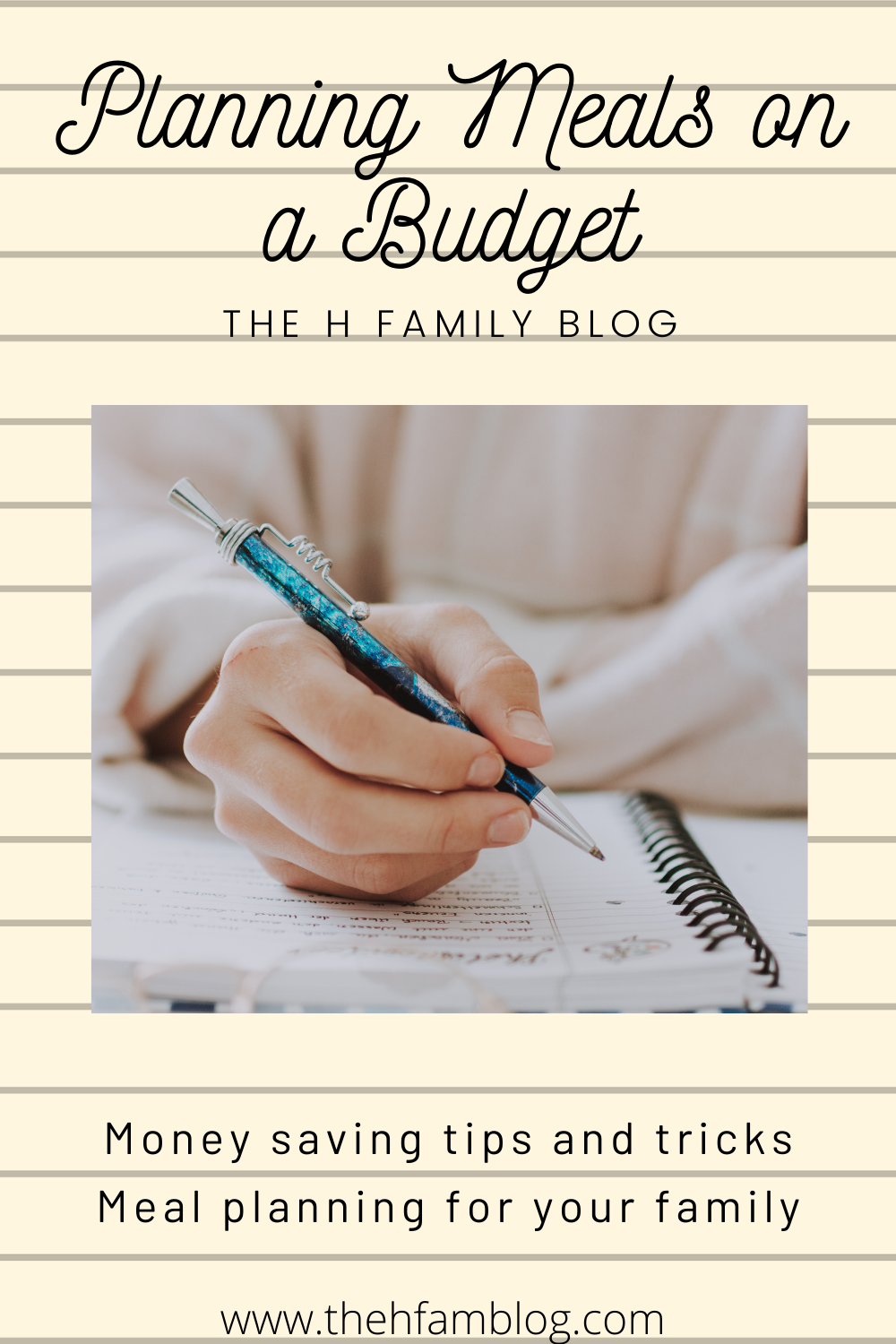Hey everyone! If any of you know me personally, you’d know I am a planner. I love planning! Planning things out helps me to feel organized. It helps me to set my priorities and achieve my purpose. Now, lets talk about budgeting. How many of you like to stick to a budget when it comes to grocery shopping? I too, try to budget or at least track our family’s spending. This helps us to better see where our money is going each month, and lets face it…with a family of 7, food is one of our biggest monthly expenses. In this post I’d like to share what has worked for my family over the years and some tips and things I’ve learned along the way.
Pre-Selecting
When planning meals on a budget, you will want to pre-select your meals. Over the years I have selected meals and new recipes to try by using cookbooks, internet searches and Pinterest. There are also options available for already made menu plans. If you are using the internet or Pinterest to find meals, here are some helpful search terms: quick, easy, fast, convenient, kid friendly, meals, recipes, holiday, monthly, seasonal etc. Be sure to mix and match these terms to get multiple recipe options.
Scheduling
Schedule your meals out. This is probably my favorite part….probably because this is the planning part. Use a weekly planner, calendar, whiteboard, phone app or a simple piece of paper. Plan out your breakfasts, lunches, dinners, snacks and desserts. Don’t forget to incorporate your activities into your meal plan. So, plan your meals based on the activities for the week. This will help you accommodate changes ahead of time, for example when you need to feed more people than normal or when you have a busy evening. Take the time to think about your upcoming week. What events do you already know are taking place? Keep your weekly schedule handy when planning your weekly meals.
Making your list
When making your list consider sectioning your list into parts of the grocery store. Be sure to have your meal plan and recipes handy when writing your shopping list. I also keep a second list that I call the “kitchen check” list. This is for things that I don’t use or have to buy very often and I’m not completely sure how much of it I have. Once I’m all done with the main shopping list, I take my kitchen check list into the kitchen and check all the items on the list. If I don’t have them or they are almost out, I add them to my main shopping list.
Shopping
The places I shop have changed over the years and with the cities that we’ve lived. It also depends on how much shopping I am doing. Currently, at the beginning of the month, I make a 2 week meal plan. I then shop at Costco and WinCo. I shop at Costco for items that we will need for the whole month. At WinCo I pick up the other odds and ends we will need for the next two weeks, that I didn’t buy at Costco. By doing this large amount of shopping at the beginning of the month, I don’t need to do such big shopping trips for the rest of the month. Often times for the 3rd and 4th weeks of the month I make meal plans based off of the things I have left over from the big shopping trip. This way, I only need to make 1 or 2 light shopping trips for things that we need to buy often, such as fresh fruits and veggies, milk, bread and tortillas.
Other tips and ideas
- Don’t shop on an empty stomach. If you are hungry while shopping you are more likely to have impulse buys, which won’t help you stick to a budget.
- Shop the ads! Many stores send out weekly ads showcasing the items that will be on sale. You can make a list for each store and pick up the different items you need where you can find them at the lowest price. You can even take this one step further, by using what is on sale in the ads to plan your meals for that week. I did this all the time when my boys were little.
- Sign up for your grocery store’s club card or loyalty rewards. I love when I’m shopping at Safeway and my total goes down when my club card is scanned.
- Buy the generic (store brand) unless it is something you really need the name brand for, buying the generic brand will save you money.
- Another idea to save money is to try choosing prep over convenience. Often times, buying a head of lettuce or a block of cheese will be cheaper than buying its convenient counter part, like a bag of already shredded lettuce or pre-sliced cheddar cheese.
- By having a menu plan, shopping list and a scheduled shopping trip, you won’t be making extra trips to the store during the week, which might cause you to buy more items.
If you are on a budget or not, planning meals can feel like extra work. So can big shopping trips. Keep in mind that by doing these things, they will help you to stick to a budget and on busy days you will know that you have everything you need on hand to make your meals. No extra trips to store during the week! Yay. Also, be sure to reward yourself or your kids with a treat after all that meal planning and grocery shopping. Happy Planning!

What are some tips and tricks that have worked for your family when it comes to saving money on your grocery shopping?
